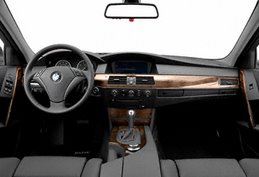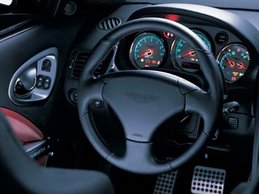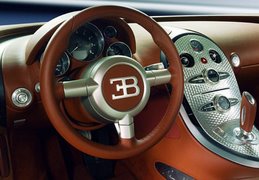 2008 Nissan Rogue SL AWD - An SUV that emerges from the bones of a Sentra doesn’t exactly cause shoving matches at our car sign-out board. We’ve compared two of the latest Sentras and found that the first, a Sentra 2.0S, ranked last in a field of five peers [“Sensible Shoes,” December 2006]. A second comparo [“Power Toys,” May 2007] placed the sportier Sentra SE-R Spec V one step up from last place. However, plopping an SUV body atop that platform works better than we had expected. One major advantage of this relationship can be seen at the scales: Our fully loaded Rogue SL with all-wheel drive weighed in at 3533 pounds, hundreds of pounds lighter than the portliest small utes and nearly identical to the weight Honda claims for the AWD version of its bestselling CR-V.
2008 Nissan Rogue SL AWD - An SUV that emerges from the bones of a Sentra doesn’t exactly cause shoving matches at our car sign-out board. We’ve compared two of the latest Sentras and found that the first, a Sentra 2.0S, ranked last in a field of five peers [“Sensible Shoes,” December 2006]. A second comparo [“Power Toys,” May 2007] placed the sportier Sentra SE-R Spec V one step up from last place. However, plopping an SUV body atop that platform works better than we had expected. One major advantage of this relationship can be seen at the scales: Our fully loaded Rogue SL with all-wheel drive weighed in at 3533 pounds, hundreds of pounds lighter than the portliest small utes and nearly identical to the weight Honda claims for the AWD version of its bestselling CR-V.Those extra inches of height do allow the Rogue to sit higher off the ground than the Sentra and translate into 16 more cubic feet of cargo space. The high roofline lends an airy feel, and there is decent legroom in the back seat, although three adults sitting across the rear bench might not be a stellar idea as the Rogue is just a smidge wider than the Sentra. The Rogue’s innards are a bit smaller than those of a Honda CR-V or Toyota RAV4 but about the same as a Saturn Vue’s. Some rivals in the Rogue’s class offer a third row, but the Rogue will go through life without one. What you do get in the way back is 29 cubic feet of cargo space, which is a few six-packs shy of the spac
 e in the CR-V and RAV4 and, again, about the same size as a Vue.
e in the CR-V and RAV4 and, again, about the same size as a Vue.Although we recognize that prospective Rogue buyers are going to be more concerned with fuel-economy numbers than burnout abilities, the forever-young goons in the home office rang up a semirespectable 21 mpg over a 550-mile mix of highway and city driving. Which turned out to equal the EPA’s city-driving mpg estimate for the Rogue. We don’t have a C/D-observed fuel-economy number for any other ’08 small four-cylinder utes, but the EPA city figures for the ’08 RAV4, CR-V, and Vue are expected to be 20, 19, and 19, respectively.
Highway cruising is where the Rogue and its transmission work best. Secure on-center steering feel, a firm but compliant ride, and a quiet cabin combine to effortlessly count down highway miles. At 70 mph the Rogue is turning a fuel-efficient and hushed 2200 rpm. Were this car equipped with a conventional automatic, such tall gearing would likely result in the annoying habit of constantly downshifting (or upshifting) between the two top gears. In the Rogue, the CVT seamlessly raises engine revs as the transmission moves imperceptibly through its ratios. Highway passing is a smooth experience. Still, if you’re old-fashioned and must have a conventional shifting sense, the Rogue offers six preset ratios that mimic the gears of a conventional transmission.
At the track, the CVT makes the most of the Rogue’s power-to-weight ratio and delivers a 0-to-60 time of 8.8 seconds. As noted earlier, we haven’t tested any of
 the Rogue’s four-cylinder peers, but we expect this SUV’s acceleration to be class competitive. Keeping wheelspin in check at takeoff is Nissan’s clutch-based all-wheel drive, set to send 50 percent of the engine’s power to the rear wheels at launch; then, once rolling, the power split shifts to the front wheels until slip is detected.
the Rogue’s four-cylinder peers, but we expect this SUV’s acceleration to be class competitive. Keeping wheelspin in check at takeoff is Nissan’s clutch-based all-wheel drive, set to send 50 percent of the engine’s power to the rear wheels at launch; then, once rolling, the power split shifts to the front wheels until slip is detected.On its first try, Nissan has produced a good-looking and spirited small SUV. It doesn’t have a third row or optional V-6 power, but there are plenty of small-SUV buyers who desire neither feature. The Rogue has the rest of the small-sport-ute checklist covered. Perhaps the name is a tad theatrical, but calling it the Nissan Competent just didn’t have the ring to it the company was looking for.













No comments:
Post a Comment